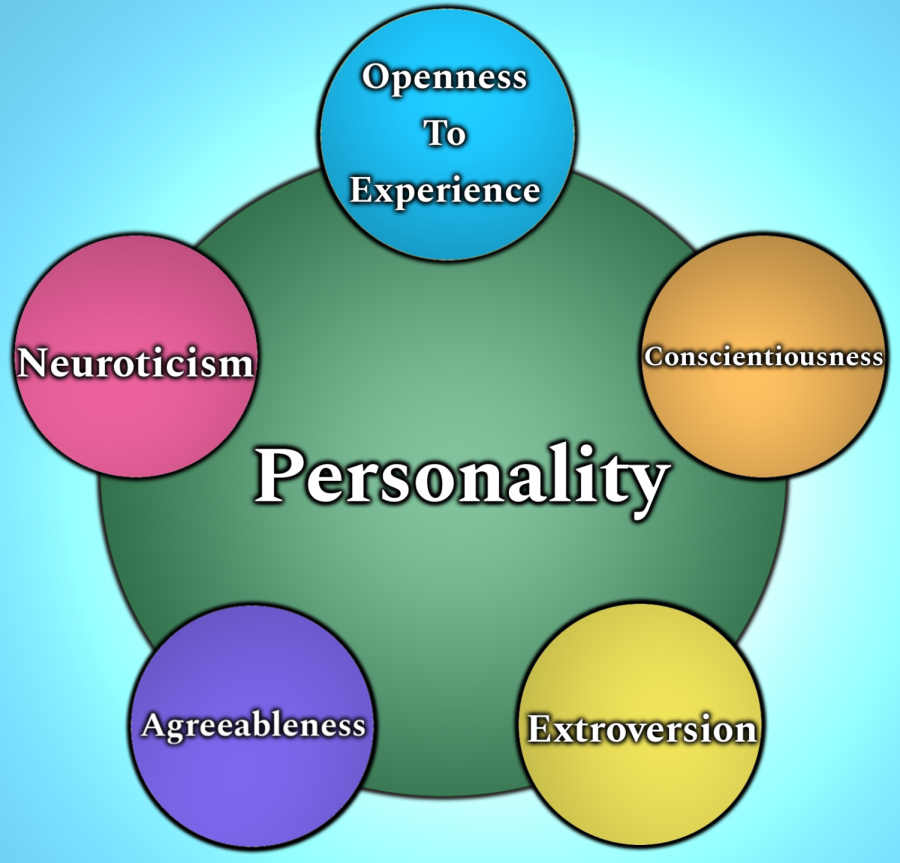Newman shares the Big-Five personalities
December 14, 2021
Similar to the MBTI, The Big Five is another personality measurement model, but the Big Five was designed for a different purpose; It was designed with universality as the main focus.
This personality model Is not only one of the most widely used, but the most widely used model in the world. This is primarily due to its extremely versatile nature. Honestly, I prefer the MBTI for the simple fact that it categorizes your personality, but they both serve a purpose. I use both in tandem with one another; one to categorize my specific personality type, and the other to dive deeper into how different I am from others. Two people can identify as an INFJ, but still, be very different in many ways.
The Big Five differs a lot from the MBTI. This model doesn’t categorize your personality like MBTI, it measures the prevalence of five culturally universal traits. In some ways, it dives deeper into how different each other is.
Now, what are the Big Five personality traits? These traits are Openness to experiences, Conscientiousness, Extraversion, Agreeableness, and Neuroticism. There is an acronym to easily remember all of these traits, O.C.E.A.N.
Openness to experiences: In the first term O.C.E.A.N., this trait should be mostly self-explanatory. A person who is high in openness will love to try new and exciting things, likes variety, is imaginative, tends to enjoy art, and is curious. People who score low in this area are the opposite; they dislike change, are resistant to new ideas, not very imaginative, and dislike the abstract or theoretical. I scored a 75% in openness which I believe is true.
Conscientiousness: The C in O.C.E.A.N., conscientiousness might be a long word, but pretty simple to understand. A person who scores high in conscientiousness tends to be organized, loves routine, plans ahead, is very down to earth (similar to Sensors in the MBTI), has good impulse control, and is goal-oriented. Someone who is low in this trait will dislike structure, procrastinate, and be unorganized. I scored a 74% in this area. I do agree with this, I like organizational tools like schedules and lists (not so much daily routines) and I make minor to moderate plans in my head that I like to carry out, but I am still decently flexible.
Extraversion: Serving as the E in O.C.E.A.N., extraversion is another mostly self-explanatory trait. One thing to remember about Extraversion is that this isn’t just about how outgoing someone is, it’s how they receive energy; if they feel energized by socializing, or if they better when they have a good amount of alone time. Extraverts tend to be outgoing, the life of the party, can be more spontaneous, has a wide circle of friends, enjoys the spotlight, and likes meeting new people. An introvert prefers alone time, dislikes small talk, often pauses in conversations to carefully think about what to say, and doesn’t like the spotlight. I scored a 49% on this trait, which means I’m more of an ambivert (in between), but still more introverted.
Agreeableness: The A in O.C.E.A.N. is an easy trait to understand. People who are high in are trusting, kind, pro-social, are cooperative, and hate conflict. They tend to try to help whoever and whenever they can, even if doing so has the potential to hurt themselves. Of course, someone who scores low is the opposite. I scored the highest in this area with a 92%. I can definitely see this in myself, and most of the time it’s a good thing, but it has gotten me into a tight spot a few times.
Neuroticism: The final term in O.C.E.A.N., neuroticism is most accurately described as someone’s emotional stability. One who scores high worries about just about everything is easily stressed and can shift moods quickly. And like always, low scorers are the opposite. I scored a 50%, so I’m about in the middle
So, that is the Big Five personality model. With this culturally universal model, we are able to learn more about ourselves and others. I hope you have enjoyed learning about this small segment of personality psychology. Now, don’t be shy, go out there and discover your scores through the website bigfive-test.com (to get percentages, divide your score by 120 and multiply by 100). Have fun and happy learning!


